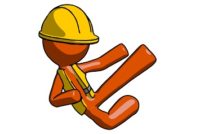Training is the number one element in accident, incident, and illness avoidance. Check the articles here frequently for the latest and best tips on techniques, trends, programs and equipment. We offer explanations for group, one-one, or self-directed situations, in both general and specific work activities. Your training will be both easier and more effective if you do.
Do you believe the best employee learning occurs while on the job and within the context of the work? There are well-tested steps to follow for rolling out a training solution for a large, mobile workforce.
Developing an effective training program is a challenge that affects most safety professionals. A proper balance of time constraints, production schedules, multiple shifts, and individual learning styles drives the effectiveness of any training program. As safety professionals, we must develop training that provides relevant and pertinent information while addressing all the aforementioned challenges.
For those who prefer to read rather than to listen, here is a continuation of the transcript of our recent EHS on Tap podcast episode with Regina McMichael, president of the Learning Factory and the Safety Training Ninja. Read on for more insightful safety training engagement tips from Regina, plus be sure to catch her […]
Do you prefer to read rather than listen? If so, you won’t miss out on our latest episode of EHS on Tap! Read the transcript of our latest podcast, where we have a chat with Regina McMichael, president of the Learning Factory and the Safety Training Ninja, about how safety professionals can make their training […]
At BLR’s 2019 Workplace Violence Prevention Symposium, taking place March 14–15 in San Antonio, Texas, Catherine Mattice-Zundel, SPHR, SHRM-SCP, founder and CEO of Civility Partners, delivered a session urging employers to broaden their approach to workplace violence prevention and take proactive steps to address incivility, bullying, and harassment before they escalate to more severe forms […]
We’re very excited about the EHS Daily Advisor’s upcoming 2019 Safety Summit, and we hope you are, too! Our latest annual event promises a wide variety of topics and speakers covering all safety aspects from compliance to culture, and among the issues we’ll be covering is one that is a constant concern for EHS professionals […]
Just a few weeks into 2019, three workers have died in Washington State, according to the state’s Division of Occupational Safety and Health (DOSH) of the Department of Labor and Industries.
In November 2018, OSHA finalized a long-awaited rule on crane operator certification requirements, amending the standard at 29 CFR 1926.1427. Still confused about what you need to know? Check out the infographic for an overview of employers’ responsibilities for training, certification, evaluation, and more.
Let’s say you have your workplace violence prevention plan in place, and you are conducting the training outlined in your plan. Part of the plan should include strategies for your workers to avoid harm. Here are four key tips to offer your workers should they be confronted with violence at your facility.
Winter is approaching fast, and many parts of the country are already seeing snow. With the seasonal changes come the hazards of outdoor work in cold conditions, snow and ice removal, and other dangers. At its Winter Weather resource site, OSHA lists 10 common winter weather hazards that employers should train employees to recognize.










